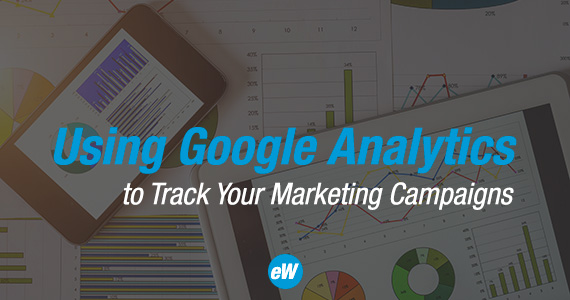 When it comes to increasing sales, marketing is crucial – but it won’t help you unless you’re also tracking your marketing efforts. Tools such as Google Analytics help you with both tracking and analysis, which can help you gauge how successful your campaigns truly are. Here’s how to get started with Google Analytics.
When it comes to increasing sales, marketing is crucial – but it won’t help you unless you’re also tracking your marketing efforts. Tools such as Google Analytics help you with both tracking and analysis, which can help you gauge how successful your campaigns truly are. Here’s how to get started with Google Analytics.
Step 1: Set up Google Analytics. You’ll need a Google account (or a Gmail address). On the Google Analytics home page, go to Create New Account, then choose Website. After completing this step, you’ll receive a Tracking ID code, which you will need to add to your website’s code. Note that Google Analytics may not begin collecting information for about 24 hours.
Step 2: Understand and determine UTM parameters. Urchin Tracking Module (UTM) is Google’s format for tracking URLs. UTM parameters are strings of information added to URLs that provide Google with additional information about the link; for example, when browsing online, you may have noticed that the URL of your landing page likely includes an embedded reference to how you got there. Consider using UTM parameters on social media and email links, banner ads and blog posts.
Of Google’s five UTM parameters, 3 are required:
1. Campaign Source describes the site in which the link is placed.
2. Campaign Medium describes the marketing activity itself.
3. Campaign Name of your overall campaign; for example, a sale or product launch.
The optional parameters are:
4. Campaign Term tracks certain keywords when you run an Adwords campaign.
5. Campaign Content comes in handy for split-testing – where you track multiple ads to gauge their effectiveness.
In the beginning, you may opt to start with only the required parameters, then add the others once you’ve become accustomed to reading the reports.
Step 3: Build a trackable URL of your own. Google’s Campaign URL Builder tool makes this a snap: Just enter the URL and the parameters you wish to track on the Builder site’s intuitive form. After you’ve submitted your information, Google provides the trackable URL, which you can cut and paste to use on your marketing campaigns.
If you intend to use Google Analytics regularly, strongly consider making your campaign names consistent, which will help you easily identify them in your reports. For example, Sandy’s Handmade Toys’ spring sale may include a string of characters after the URL that looks something like utm_campaign=2015springsale, and the winter sale would look like “2015wintersale.” Keep in mind that your parameters are visible to customers, so avoid any terms you don’t want your customers to see.
Step 4: View your reports. Once you have created URLs, they’ll be tracked each time they get clicks, and Google collects and assembles all the data for you. Your report will include information about whether your visitors are new or returning, how clicks correlate with different dates, and how long potential shoppers are spending on your site. If you track multiple campaigns, Google generates a report that makes it easy for you to compare metrics and results.
The Bottom Line
Google Analytics provides the data you need to objectively assess what’s working and what isn’t, and saves you time and money on campaigns that may not be performing well.






